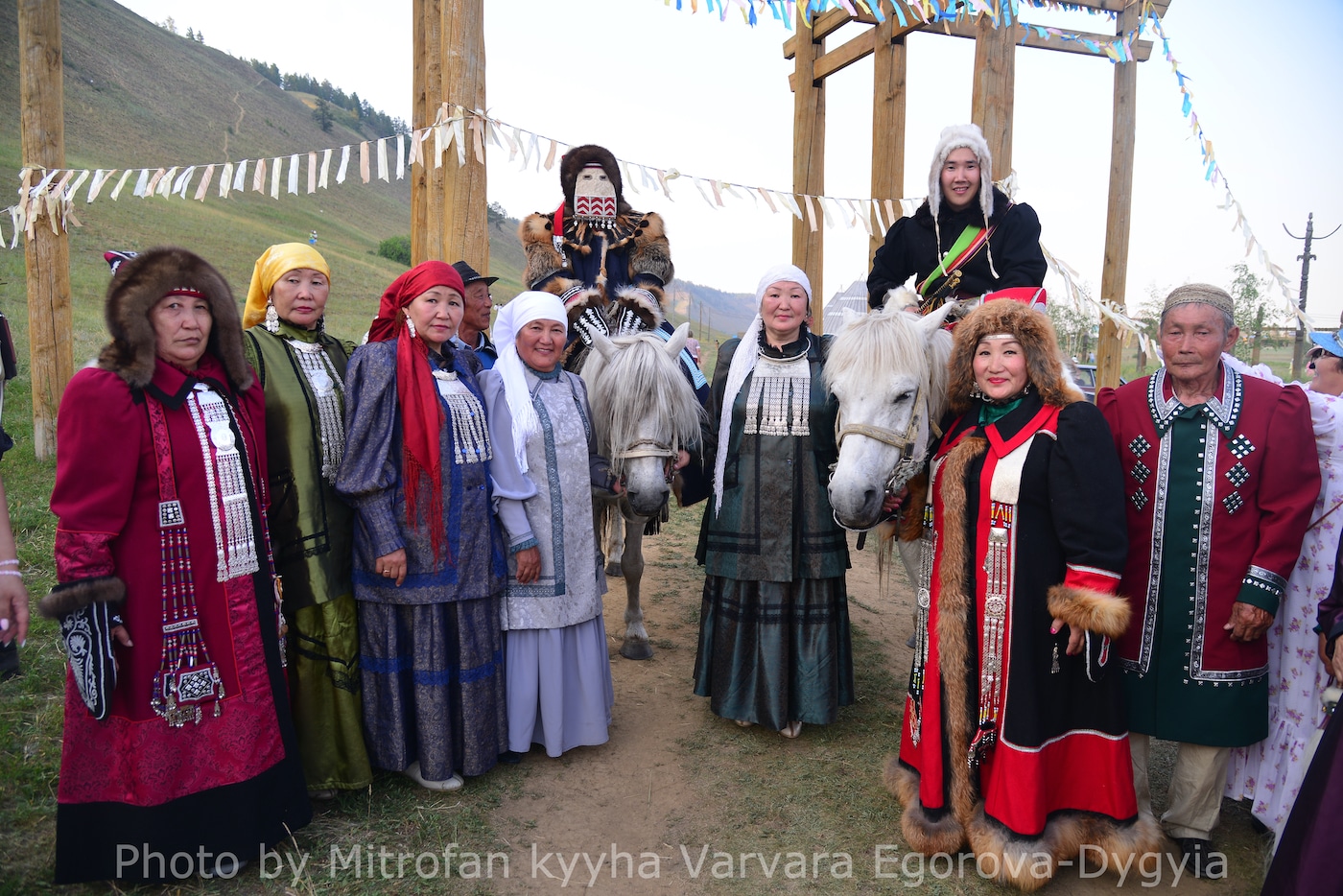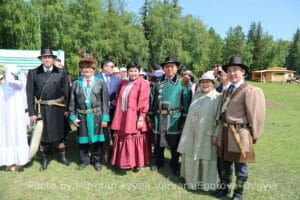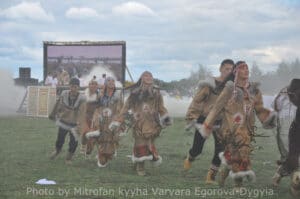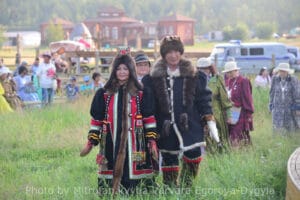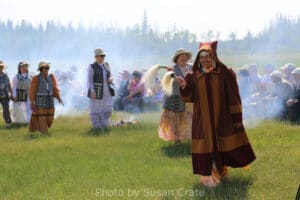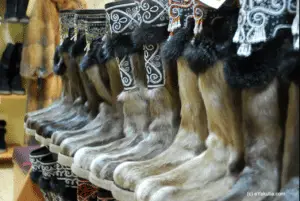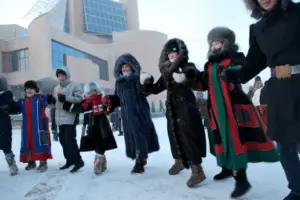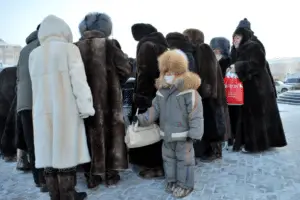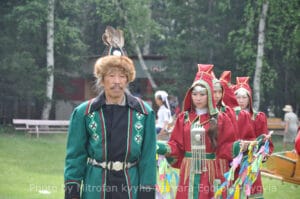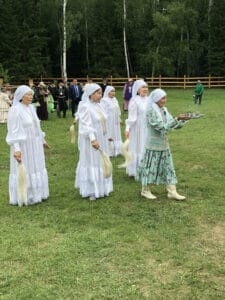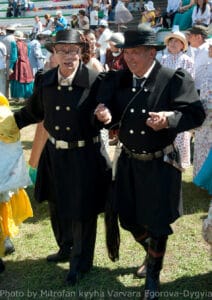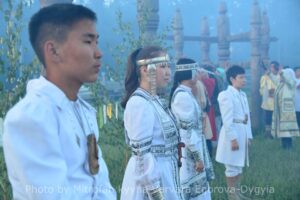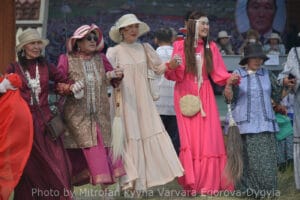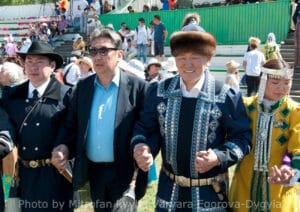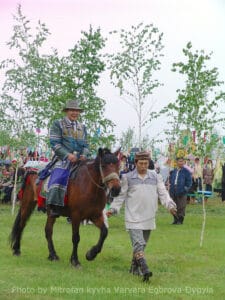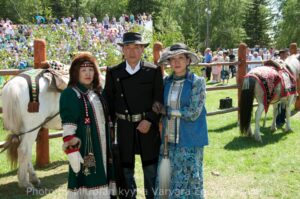The original Sakha is given for some terms in parentheses.
Photographs provided by Mitrofan kyyha Varvara Egorova-Dygyia, Susan Crate, and Kathryn Yegorov-Crate.
The Sakha Republic, known as Sakha sire (Саха сирэ) in the Sakha language, is home to one of the most extreme climates on earth. Winter temperatures regularly dip past -45F, making it the coldest inhabited place on earth. Meanwhile, summer temperatures regularly soar to upwards of 85F. Winter weather, however, lasts seven to eight months of the year, with the spring and fall seasons beginning and ending quite quickly.
Since ancient times, the Sakha people have adapted remarkably well to these seasonal extremes. Sakha traditional clothing is one cultural element that has allowed them to survive the harsh climate of their homeland. It is inextricably linked to and reflective of the Sakha’s wider environment, culture, and religious beliefs.
Sakha National Clothing
For centuries Sakha have weathered their climate by wearing clothing made from sustainably and humanely sourced animal-derived materials. This practice, although evolving, remains central in Sakha culture.
The elaborate decoration of traditional Sakha clothes, the processes of clothes-making and wearing have all had special historical importance. Traditionally, clothing functioned not only to protect the body from the weather, but also to protect the soul from evil spirits. Jewelry and detailed embroidery work acted as talismans. Thus, clothing, and especially women’s clothing, was often elaborately decorated. Today, Sakha national clothing incorporates traditions, influences, and elements from southern pastoralist and nomadic tribes of Eurasia, from Indigenous northern peoples, and from Russian clothing of the 17th and 18th centuries.
Pre-Christian clothing of the Sakha was made exclusively from animal-derived materials like fur, hides, leather, and suede. Few of the pre-Russian garments still exist but from records describing them, they are known to have resembled the dress of Indigenous northern peoples and pastoralists and nomadic tribes of Eurasia. Clothing preserved in burials show that typical Sakha women’s clothing in the early 17th century consisted of a beaded sleeveless vest made from leather trimmed with fur and a leather circle skirt that fell just below the knees.
In the 17th and 18th centuries information about Sakhas’ spiritual and material culture was first recorded by explorers, ethnographers, and geographers. These clothes have become thought of most widely as Sakha traditional clothing. Nevertheless, the traditional clothes of Sakha were not frozen in some kind of canon for centuries; modifications in cut, sewing styles, jewelry and material selection changed based on socioeconomic, cultural, and ecological factors.
In the 18th and 19th centuries, imported fabrics like calico, broadcloth, silk, velvet, and cotton became popular among Sakha who could afford these expensive materials. With the spread of these materials, use of leather and suede diminished. Additionally, by this time, clothing had already begun to adopt Russian influences in style and make. Common Sakha continued to make their undergarments and summer clothing like billowy shirts and robe-like garments from thin suede and leather. Rich and poor Sakha alike would have at least two sets of clothing: one for everyday use (which generally still featured sacred design elements) and one more intricate for special occasions, such as the important midsummer yhyakh festival.
Sakha Winter Clothing: Layering the Torso and Legs
Since winter is the longest and most brutal season, winter wardrobes often featured a wide array of attire.
Humans lose heat from any part of the body that is uncovered and in contact with the cold. Sakha traditional winter attire thus covers a person from head to toe, often only leaving the eyes and some parts of the face exposed.
Layering clothing is also crucial to maximize the insulation clothing provides and to retain heat. Three layers of winter clothing was the minimum.
Traditionally, both men and women wore undergarments known as is tangas (ис таҥас) made from rawhide suede as their first layer. Loose long-sleeved undershirts and stockings or long socks called tugut keenche (тугут кээнчэ), which were made from fawn hide, were worn by men and women. In addition, men wore long pantaloons, and women wore gaiters that attached to knickers.
For the middle layers, men wore thick, flowy tunics called yrbaakhy (ырбаахы) and trousers known as ystaan (ыстаан). These were originally made from suede, but later wool and cotton became more common. Additionally, men would put on a khomuhuol (хомуһуол), a caftan-like jacket with padded shoulders and a large black collar.
For their middle layers, women would wear a djogdjuurdaax khaladaai (дьогдьуурдаах халадаай), a flowy yoked dress, and a fur-trimmed vest called a seliechchik (сэлиэччик) or kehiechchik (кэһиэччик).
The final layer is called tangnar tangas (таҥнар таҥас), a term which simply means “outerwear.” Son (сон) is a generic term for any kind of fur coat or overcoat that reaches to the knees or lower. Traditionally, they would be made of fur, sometimes with the hair facing in and the hide, typically from reindeer, bear, wolf, and/or dog, facing out. Sometimes, the hair would face outward and inside would be a lining of fur from smaller animals like squirrel or fox. More recently, son lined with or made entirely of wool or cotton evolved. If a coat hangs to the feet and features fur both inside and out, it is particularly warm and rich and is known as a saghynn’akh.
Women’s son, particularly ones reserved for special occasions, were elaborately embroidered, beaded, and trimmed with fur. The customary color scheme was green and red with silver adornment and brown or gray fur trim. Men wore a silver belt called a komus kur (көмүс кур) over their coats, off of which hung a sheathed, traditional Sakha knife called a Sakha byhagha (Саха быһаҕа).
The knife was used in combat but was more commonly used for working with animal carcasses and hides after a hunt, working with wood, and performing other crafting skills. The iron and forging are both locally sourced, as is the birch wood for the handle. Archeological digs have shown that these knives have been in use for many centuries.
Sakha Winter Clothing: Protecting the Extremities
For the feet, felt-soled fur boots called unti (унты) were worn. Unti were made from the skin and fur taken from reindeer legs, which is the thickest and most well-insulated area of a reindeer’s hide. This style of boot is borrowed from the Evenki people and because the soles are felt, can only be worn in the dead of winter and not during the wet thaw. Women’s unti usually have a beaded and embroidered band around the opening of the boot. Men’s are less ornately decorated.
After the thaw, Sakha would commonly go barefoot. However, after Russification, only Sakha children would go barefoot and adults would wear felt boots soled with leather or other durable materials called khaatyngka (хаатыҥка) after transitioning from unti. For special occasions, Sakha would wear thin, soft soled leather boots called eterbes (этэрбэс). Many different kinds of animal skins were and continued to be used in their construction, including horse, reindeer, moose, cow, and rabbit. These materials are still commonly used today although some modern eterbes use non-traditional materials like vulcanized rubber, waterproofed leather, and resin, which make them sturdier for more regular wear. There are several styles of eterbes as well: tys eterbes, like unti, are made from the skin from deer or horse legs; saary eterbes are made from horse leather; and blackened with soot; and kurumu (куруму) are tall furry boots that go above the knee.
Boots would be paired with ulluk suturuo (уллук сутуруо), which are short, knee-length, legwarmer-like garments that are pulled over boots, tied to undergarments, and pulled up to the thighs.
Bergehe (бэргэhэ) is the catchall term for hats and headwear. They are usually lined with fur or accompanied by fur inserts. In addition to trapping heat, these were also intended to protect wearers from unclean forces known as abaahy (абааһы). These forces, while dangerous according to Sakha folk belief, are also afraid of wool, down, and animal hair.
Hats come in a variety of styles as well. A chompoy bergehe (чомпой бэргэhэ) is a tall, cone-shaped cap with earflaps worn by both men and women in the winter. A djorbuongka (дьорбуоҥка) is a soft, round fur cap.
A particularly important type of hat is the djabaka (дьабака), which embodies femininity. It is intricately embroidered and shaped like an hourglass, representing the female torso. Traditionally, they featured two tiny tufts on top made from squirrel or fox ears, which represented ears or horns, which were believed to protect against diseases. This design is less common now, replaced by a new design featuring a bifurcated piece of cloth applied to the back. This is called a chopchuur (чопчуур) or chechchekh (чеччэх), depending on the region. It symbolizes femininity and is embroidered with multicolored beads and thread. A winter djabaka is typically fur on the inside and outside while a summer djabaka is typically cloth and often features beadwork that drapes the wearer’s face.
Some djabakas also feature a decoration called tuohakhta (туоһахта), which is a large round silver plaque sewn on the front top of the hat. Silver, like iron, is quite widely available in Sakha and is particularly prized as a traditional source of jewelry and embellishments for clothing.
Hats are particularly essential to retaining body heat. In many cultures, they also serve particular ceremonial and symbolic purposes. Thus, there are numerous other types of hats in Sakha culture as well. In fact, the Sakha national oral epic story, the olongkho (олоҥхо) mentions many traditional types which made use of horns, feathers, animal fur and pelts, and various metals.
Mittens and gloves are both encompassed in the Sakha term utuluk (үтүлүк). They are made from fur, leather, and, in modern times, plant fiber textiles. The hands must be particularly protected in extremely cold weather as they have little fat and freeze easily. Thus, most utuluk have fur lining or are paired with fur-lined inserts. This lining is often made from hide taken from animal legs, which is most valued for providing thick protection. Men’s utuluk feature more minimal decoration, often limited to simple designs with fur or fringe. Women’s utuluk are more elaborately decorated with intricate beadwork, embroidery, fur, and leather.
The final piece of a proper winter ensemble is neckwear. Many saghynn’akhs and sons have thick furry collars and lapels, but in order to protect one’s neck from the biting wind, many Sakha wear additional neckpieces like a saal bylaat (саал былаат), which is a shawl made of any number of materials, most often knit wool or woven cotton. Another option is a shawl or muff called a mooitoruk (моойторук), which is made from fur.
Sakha Summer Clothing
In the past, summer clothes were made out of very thin suede. Russian missionaries introduced the djogdjuurdaax khaladaai (дьогдьуурдаах халадаай), a flowy, robe-like yoked dress, and a flowy tunic now called an yrbaakhy (ырбаахы) or khaladaai (халадаай) in Sakha. Russians also popularized materials like cotton and linen, but it wasn’t until the late 19th and early 20th centuries that ordinary Sakha folk could afford these breathable plant fiber materials to make these dresses and tunics. At this point in history, a simple, lightweight djogdjuurdaax khaladaai and a kerchief or bylaat (былаат) on the head became the staple summer garment for women. An yrbaakhy or khaladaai with trousers become the standard summer dress for men who would also don a bylaat to protect against the sun when needed.
Both sexes would also go barefoot for most of the warmer months, when footwear was reserved for special occasions. Everyday summer footwear didn’t become popular until after WWII and even then, children often went barefoot in spring, summer, and winter.
In summer, as in winter, most Sakha would have at least two changes of clothes – one for everyday use and another for special occasions.
The most important Sakha holiday, yhyakh, takes place in midsummer. In the past and now alike, Sakha don their finest regalia for the festival. From the end of the 17th century to the mid-18th century, as Russian pioneers laid the foundations of fortresses and ports in the Sakha territory, they brought with them their customs and ways of life. As Sakha people were incorporated into the Russian Empire, their garments took on Russian influence in style and construction. Initially, only the upper echelons adopted garments à la russe, or of the Russian kind, like the djogdjuurdaax khaladaai, made from newly introduced materials like calico, cotton, linen, and silk. Gradually, these styles and fabrics made their way into most every Sakha person’s wardrobe as it became progressively more fashionable, more financially viable, and simply easier to purchase these imported materials and to wear Russian style garments.
Today, special costumes worn in summer tend to be lightweight and flowy.
Classic women’s yhyakh attire consists of an elegant djogdjuurdaax khaladaai, embroidered and beaded suede boots called tumustaax saryy eterbes (тумустаах сарыы этэрбэс), and an optional embroidered vest called a seliechchik or kehiechchik (сэлиэччик, кэһиэччик). No women’s yhyakh outfit is complete without traditional Sakha earrings or ytargha (ытарҕа), which feature Sakha ornamental motifs like flowers and birds. Many women will also adorn themselves with an assemblage of cufflets called boghokh (бөҕөх), a headdress called a bastynga (бастыҥа), and a necklace-like chest adornment known as a ilin kebiher (илин кэбиhэр) which often has a matching kelin kebiher (кэлин кэбиhэр), which adorns the back. These accessories are typically made of pure silver, which make them incredibly heavy and expensive. Many women opt to wear beaded or wood-carved versions of these ornaments. Furthermore, because the weather is often very hot during yhyakh, women will sometimes wear a light-colored, fancy version of a bylaat on their heads to shield themselves from the sun.
Typical men’s yhyhakh attire includes a flowy tunic or yrbaakhy (ырбаахы) or a European-style dress shirt underneath a khomuhuol (хомуһуол), a type of men’s jacket or caftan that is embellished, has padded shoulders and a large black collar; a silver belt or urung komus kur (үрүҥ көмүс кур); ystaan (ыстаан), pants; tys eterbes, suede boots; and a brimmed hat made from braided horsehair called a kyl seleeppe (кыл сэлээппэ). Both men and women wear kyl seleeppes and carry deibiir (дэйбиир), which is a horsetail used to swat mosquitos. Men will hang their deibiir from their belts along with their sheathed knife.
Sakha Clothing: Reviving Traditions
Nowadays, as in the past, many Sakha reserve their skillfully crafted traditional garments for wear on special occasions. Although it is highly impractical to wear fur in summer, growing dedication to wearing traditional garments means that even winter clothes like saghynn’akh and son are worn at yhyakh, albeit for brief fashion shows, photo ops or ceremonies.
Yhyakh is a wellspring for Sakha traditional garments. Yhyakh not only allows people to flaunt their fine clothes, it also provides a venue and opportunity for Sakha masters and artists with vested interests in reviving and restoring pre-Christian, pre-Russian styles of clothing. Historic, ethnographic, and anthropological records of the yhyakh, the Sakha national oral epic tale, olongkho, and other important sources of knowledge about the Sakha culture allow for seemingly abandoned or lost traditions to be revitalized and many in Sakha are doing just that.
If you were to walk the foggy wintery streets of Yakutsk or any town in the Sakha Republic today, the most common outerwear are undecorated son or fur coats and down feather quilted parkas. While traditional means and methods of making these winter garments have changed, many Sakha still make use of these items of dress and they are still practical in the still-extreme climate. It is common to see people wearing a mixture of traditional and new articles of clothing like unti, the traditional gloves, and utuluk, the traditional boots, with down feather parkas or sons worn with beanies and rubber-soled, waterproof snow boots.
Traditional Sakha garments are less often worn as regular spring, summer, and fall attire. Nevertheless, they can be seen at theatre productions, celebrations, and other special or cultural events. Their image and style thus remain fairly well known.
The traditional clothing of the Sakha has evolved over time, reflecting cultural influences and a changing economy. However, it has always remained a vital part of survival for the Sakha people and reflective of their own unique culture and religious beliefs. Today, it is a growing mark of national pride to see and wear this traditional clothing, which is still made by local masters.
More About The Sakha
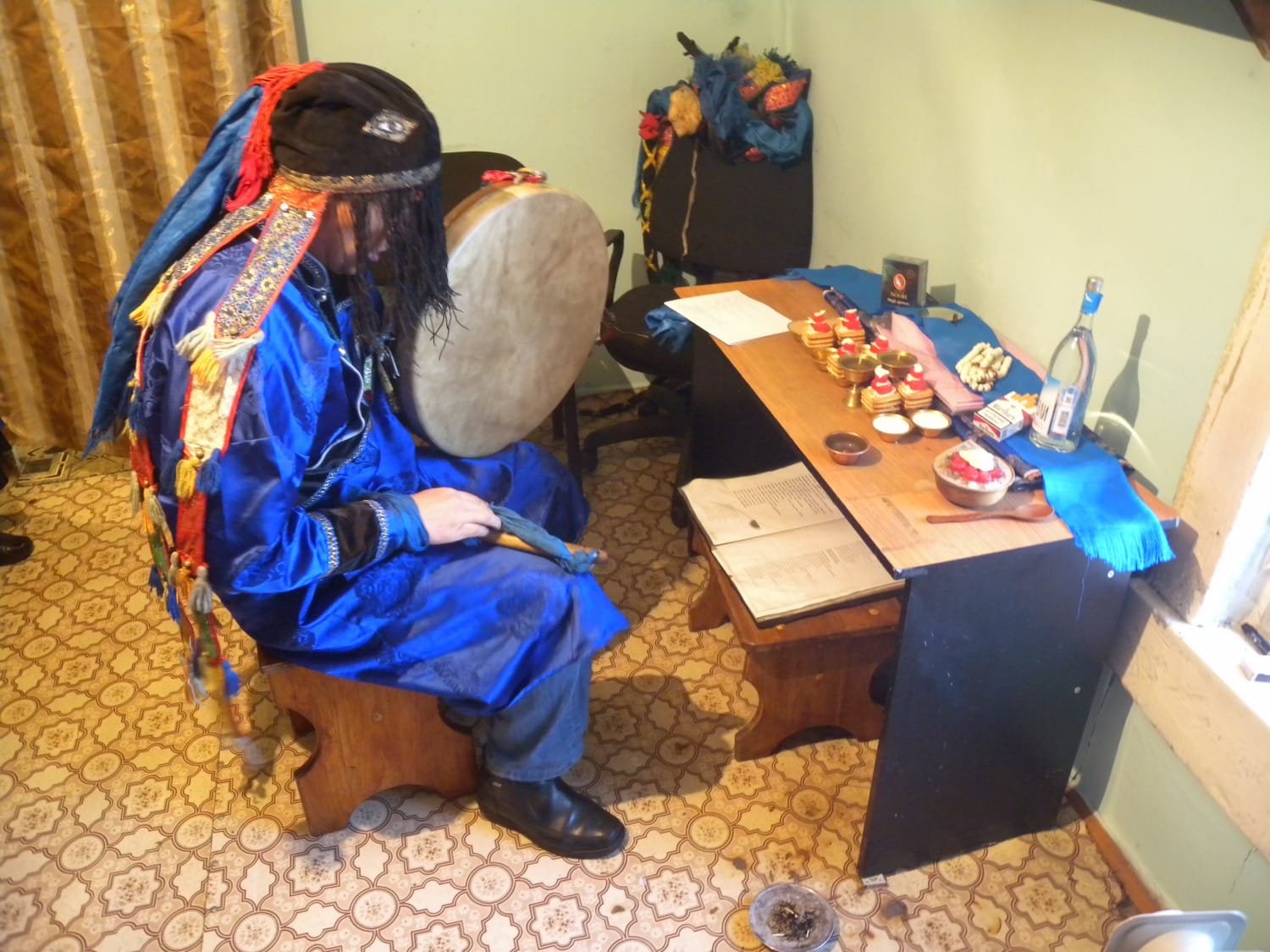
Tengeri Shaman Center in Irkutsk
Shamanism is the common name for the traditional religions of a number of native Siberian peoples; the word describes a system of beliefs in which a large number of spirits, gods, and ancestors affect daily life on earth and can be called upon and influence by specially gifted individuals called shamans. While groups such as […]
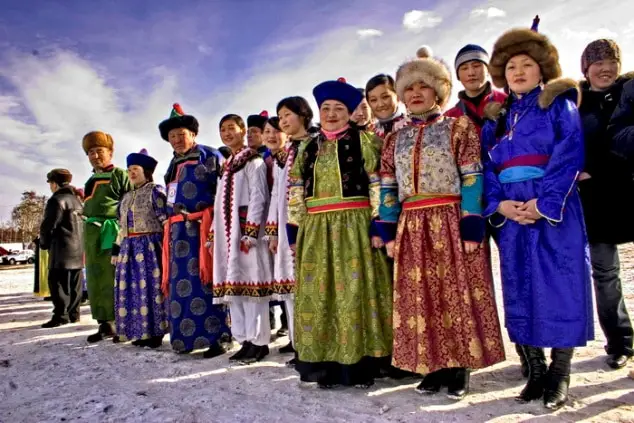
5 Ways To Experience Buryat Culture in Irkutsk
Today there are approximately 500,000 people that identify with the largest indigenous group living in Siberia, the Buryats. The Buryats are a group of people descendent of various Siberian and Mongolian people that inhabited the Lake Baikal area, where most of the ethnic group is still concentrated, with many continuing to engage in traditional ways […]

National Unity Day in Russia: Student Observations
National Unity Day is celebrated on November 4th. Russia’s absolute newest holiday, created in 2004, celebrates the liberation of Moscow from Polish troops in 1612 and the subsequent end of the “time of troubles.” This is the first time in nearly 400 years, however, that an official state holiday has marked the occasion, leading many […]
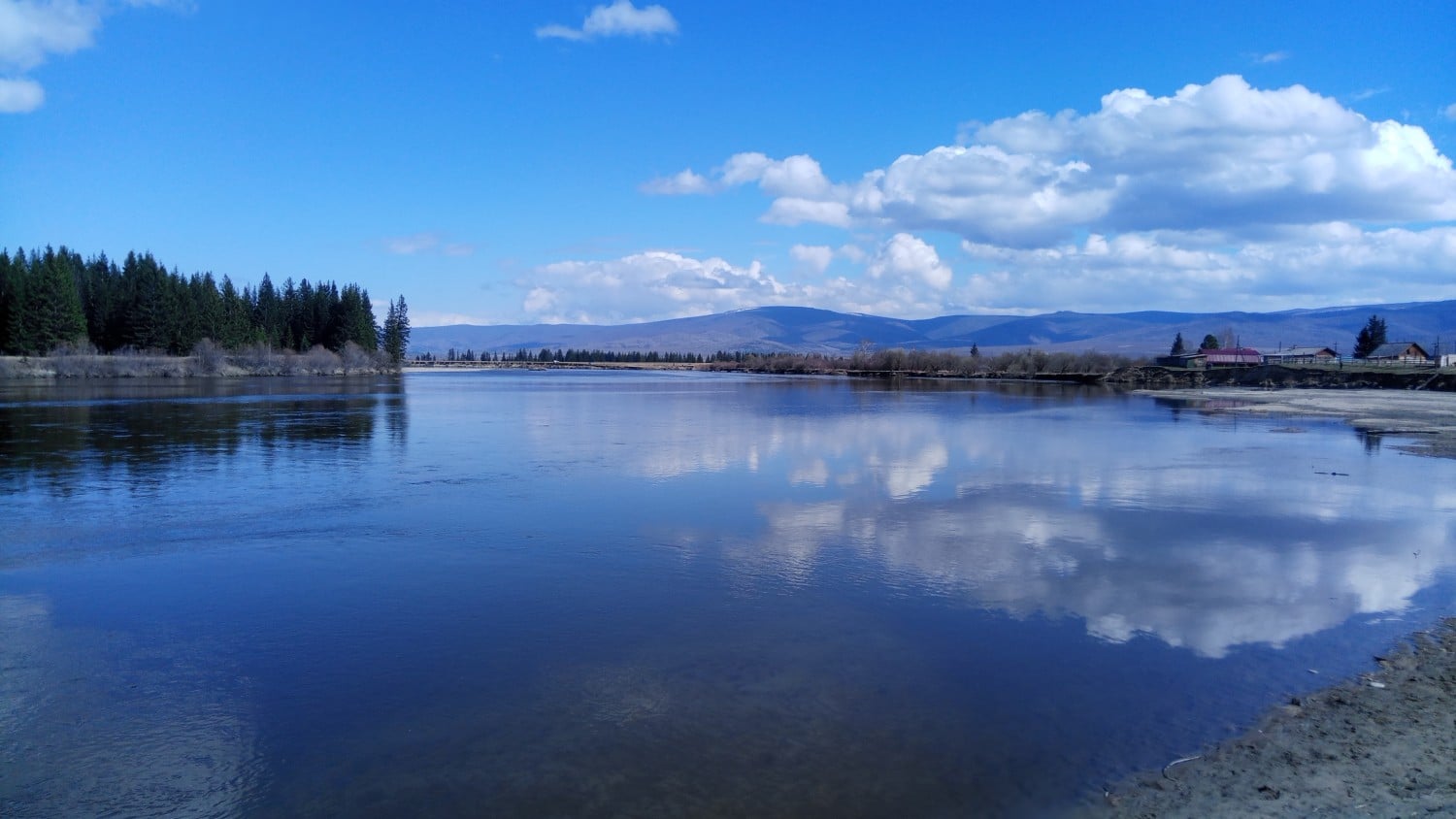
Buryats on Buryatia
The Republic of Buryatia is located in South Central Siberia sharing Lake Baikal with Irkutsk Oblast. Roughly 500,000 people identify as Buryat making the Buryats the largest indigenous group in Siberia. The Buryat people are descents of several different ethnic groups including Mongolian and indigenous Siberian. Because of this, Buryat culture is an interesting and […]
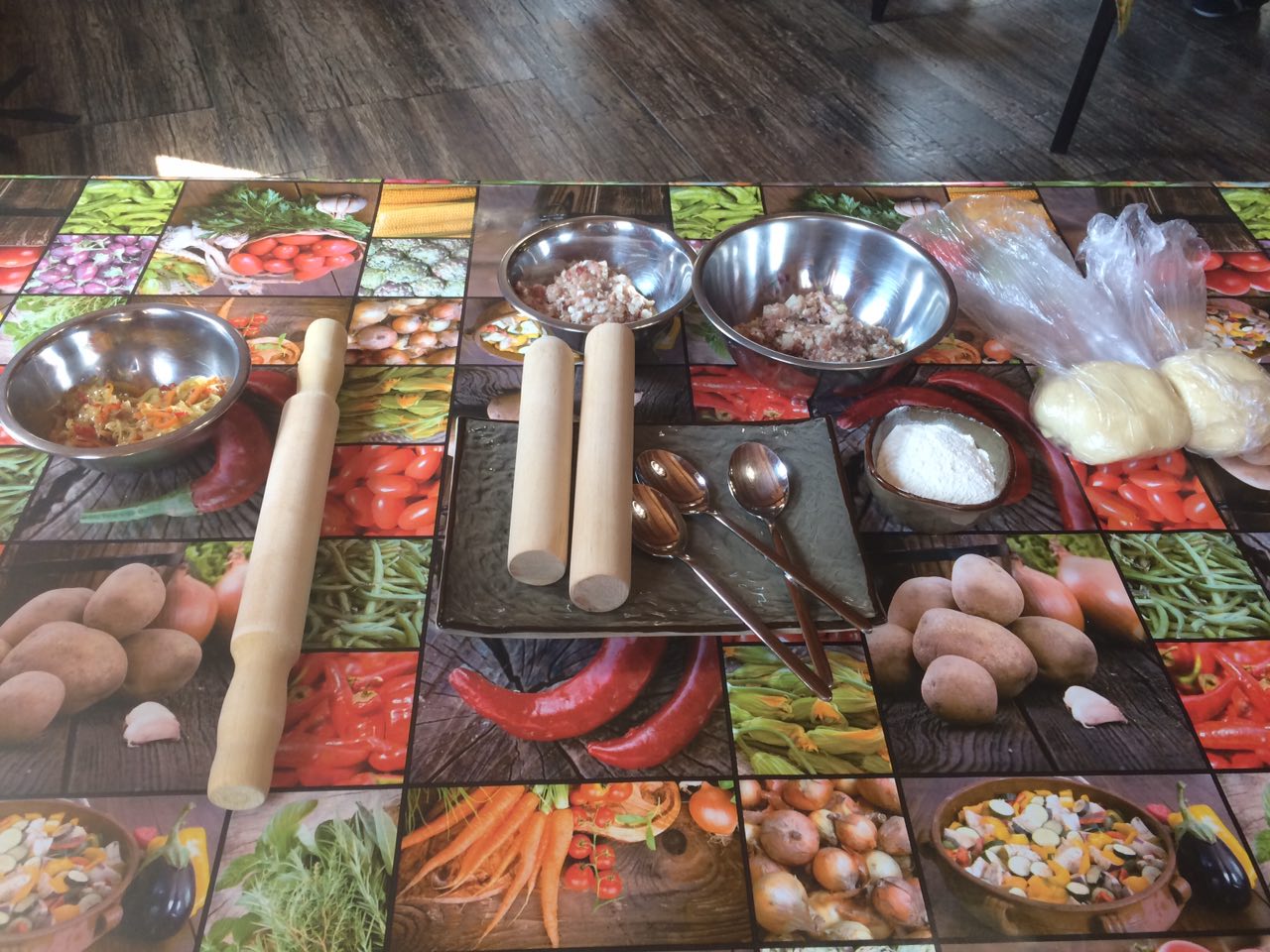
Buryat Cooking Lesson at Ulus in Irkutsk
One of my favorite things about living in/traveling to other countries is getting to know the national cuisine. Irkutsk is located right next to the (Russian) Republic of Buryatia, and as such has a large population of ethnic Buryats (they’re closely related to Mongolians). I also love cooking, though with a minimum of skill, so […]

